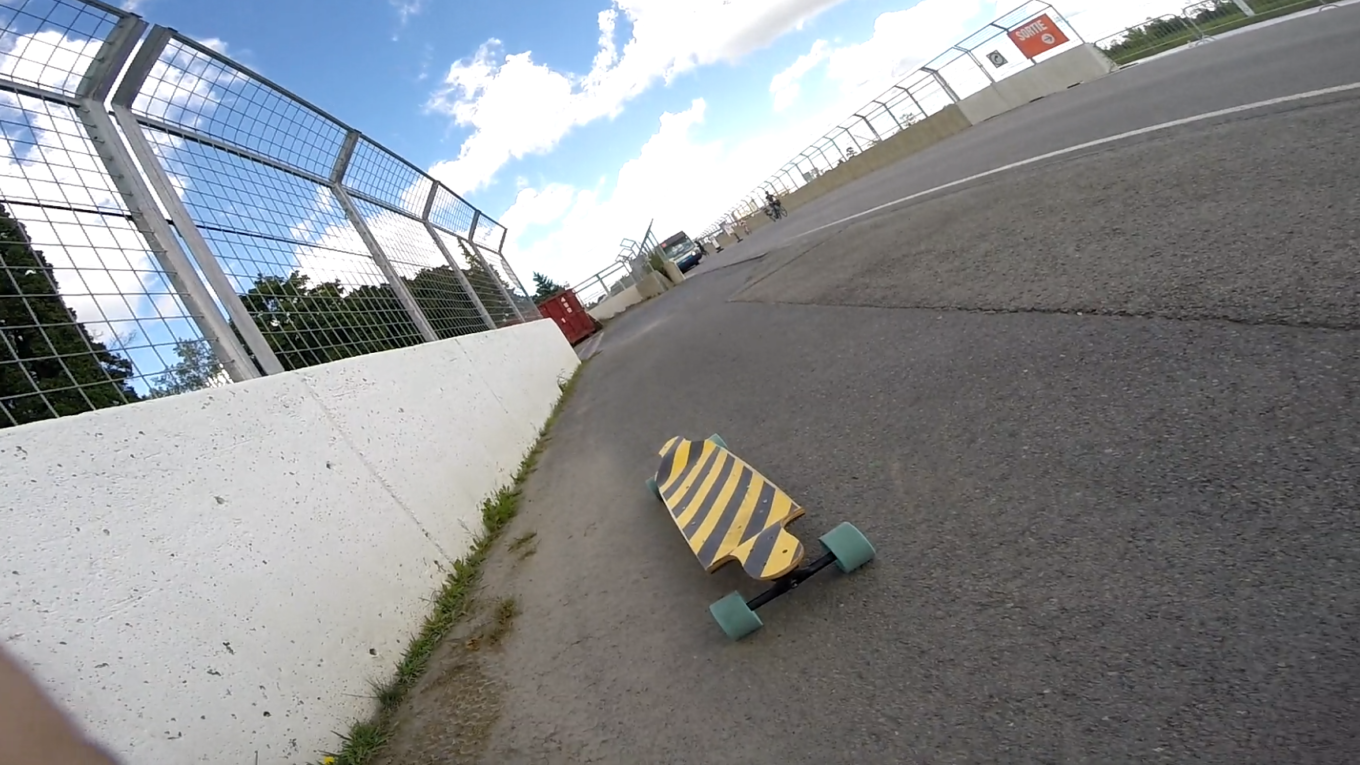The Wasp v1.0
The Wasp is the first skateboard we fully designed at Fullskate.com. Why we name it The Wasp is obvious, and this grip tape generated a lot of inquiries and questions on our Insta account. The full name of the Wasp is TheWasp FS 01. For a first board, the Wasp is ambitious: a longboard capable to ride at a good speed for over 30 km (17 miles) and able to go over 50 kph (31 miles/hour). To be complete, we wanted this DIY board to be at a reasonable cost, comfortable, safe, and simple to build. So we needed also to use the best components to build it: Orangatang wheels, good quality bearings (to be safe at high speed), good quality battery, and a great deck. All the major electrical components (motor, remote, VESC) are state of the art and come from Flipsky (so this is in a way for us a Flipsky board) and MBoards (the battery and the enclosures).
We did it! The Wasp is a fast board (over 50 kph), comfortable to ride, with high-quality components, all of this for a budget of less than 900 USD.
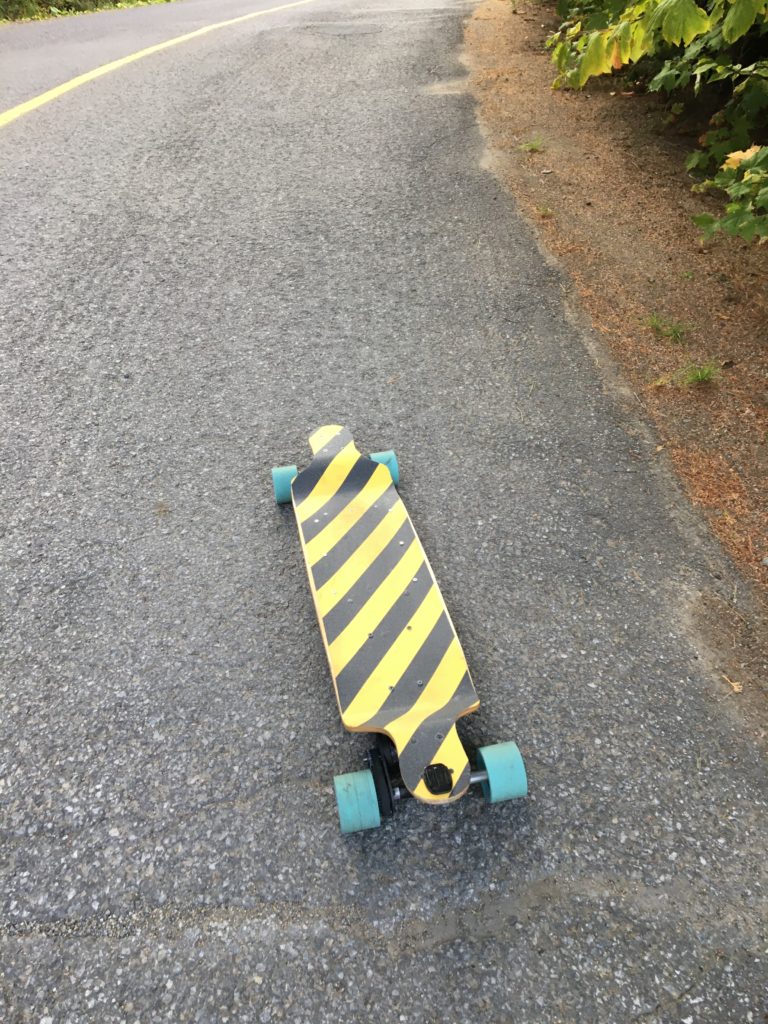
The Wasp is a longboard electric skateboard format: the deck is 40 inches long and 9,5 inches wide. Made with Canadian Mapple, it is a massive high-quality deck. Since the beginning, we wanted to give it an unusual look: the board is tainted blue, and we added on it a great quality Yellow/Black stripe Jessup grip tape. That kind of stripes define danger and prototypes, and we found it perfectly sized! Compared to cruiser like the Loaded Solo, this is a massive board, not of the ones you walk in the malls: we use The Wasp when we explore. And as everything is fixed, especially the 12S battery, there is no way this will board a plane. This stays home … or travel in your car.
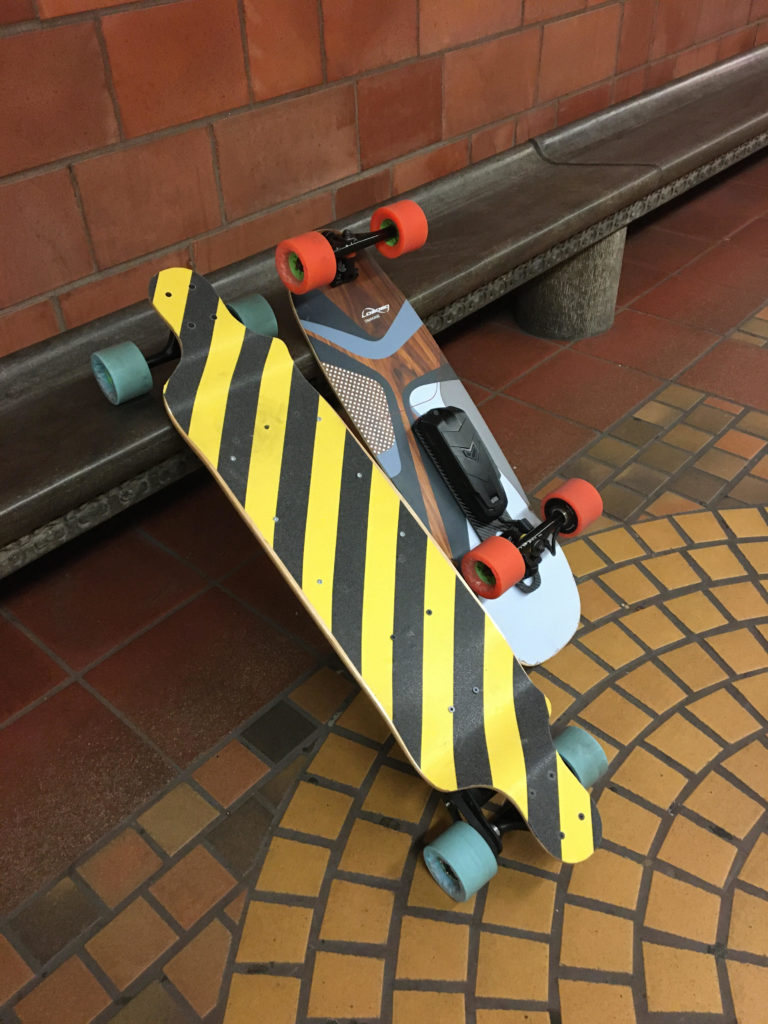
The Wasp components
As explained, the Wasp FS 0.1 is made mostly of Flipsky mechanical and electrical components. We used standard truck sets and motor mount kit from this company. Flipsky offers a 204MM Electric Skateboard Truck Set with a hanger of 204 mm : pretty wide, for a very solid aluminum truck, and trustable. The rear truck intended to support the motor is adjusted probably by a milling machine) to perfectly receive the motor mount. To fit on this truck Flipsky provide a in-house motor mount. You can not buy the motor mount alone. You will need to order a complete kit, including polleys and belts, that you will not use if you decide to go with Orangatang wheels, like us.
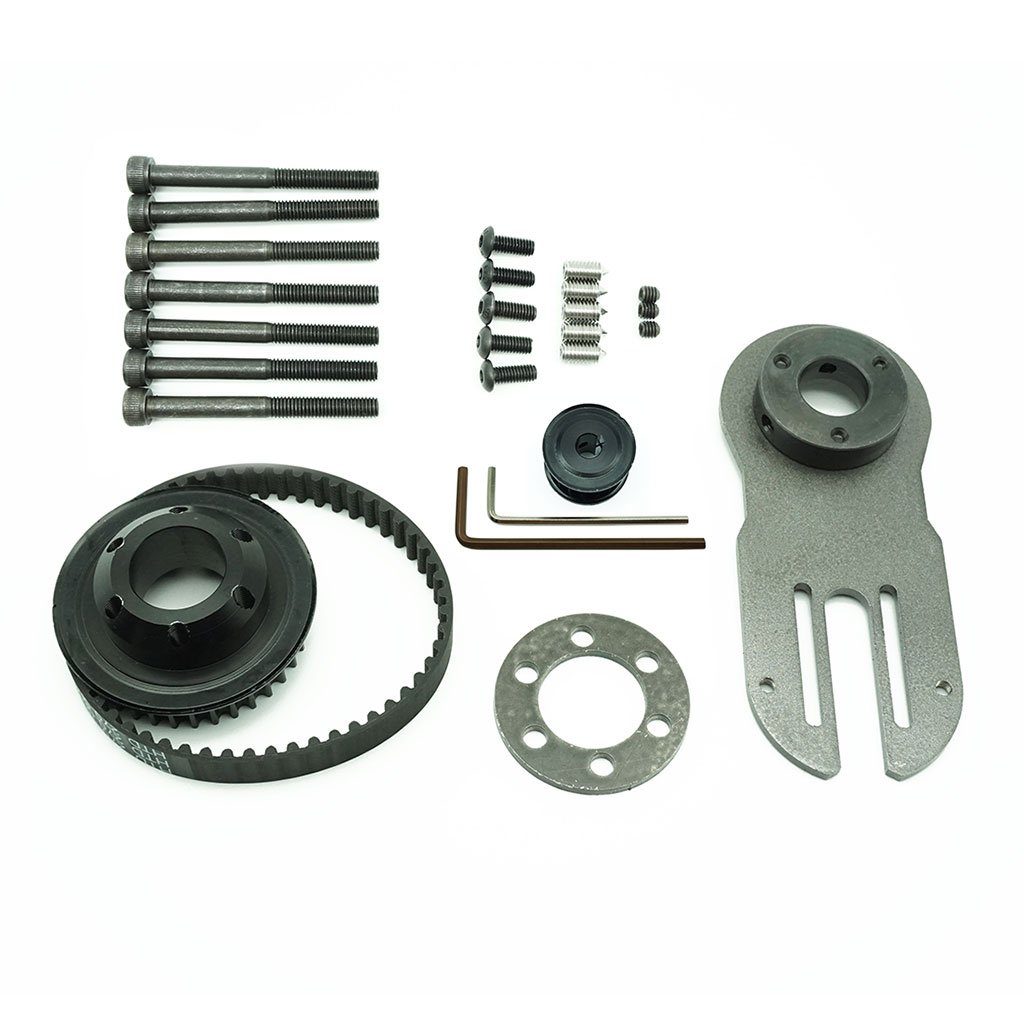
The Flipsky motor mount kit includes a pulley for the wheels sold by Flipsky. We will replace the wheel pulley system by a Kegel compatible one. This kit is available here.
There is some divergent opinions about the Flipsky Trucks and motor mount. The family of round trucks hangers uses motor mounts with a circular hole.

You have to slide the motor mount on the hanger and then screw three hexagon socket set screws with cone point (probably DIN 914) to make sure the motor mount will not move. The difficulty here is that the screws must be firmly engaged and the cone point must be strongly applied to the hanger. Due to the vibrations of an electric skateboard, without proper preparation, the screw will move and the motor mount will rotate on the hanger. To avoid this, you need to use Loctite 243. This thread locker (on sale at Amazon) will have to be used to fill the holes of the DIN screws once the motor mount is in place and only after to firmly screw the DIN. Fixed with this technique our motor mount never moved after 100’s of kilometers. You can apply the same technique to every nuts and bolt on your setup.

Configuring the electronics
The connections of the VESC are not too difficult. We ordered a VESC enclosure at Mboards that did not fit with our VESC : a metal plate was blocking the top. We decided to remove this metal plate and all went fine. We fixed the VESC on the board using a classical Velcro. As depicted in the picture, the VESC 6.6 have its own on/off switch be need of anti-spark). You will have to connect the motor, its sensors, and the remote transmitter. The wire cable white from outside of the remote will have to be connected to the positive input from the battery if you want to get battery level on your VX1 remote really much more useful than to have to connect an additional battery meter).
Once all is done, you will have 1) to connect the Flipsky VESC to a PC using the USB connector, run the detection test, configure the battery parameter 2) configure the remote for a 2S battery. All should be ready to run !
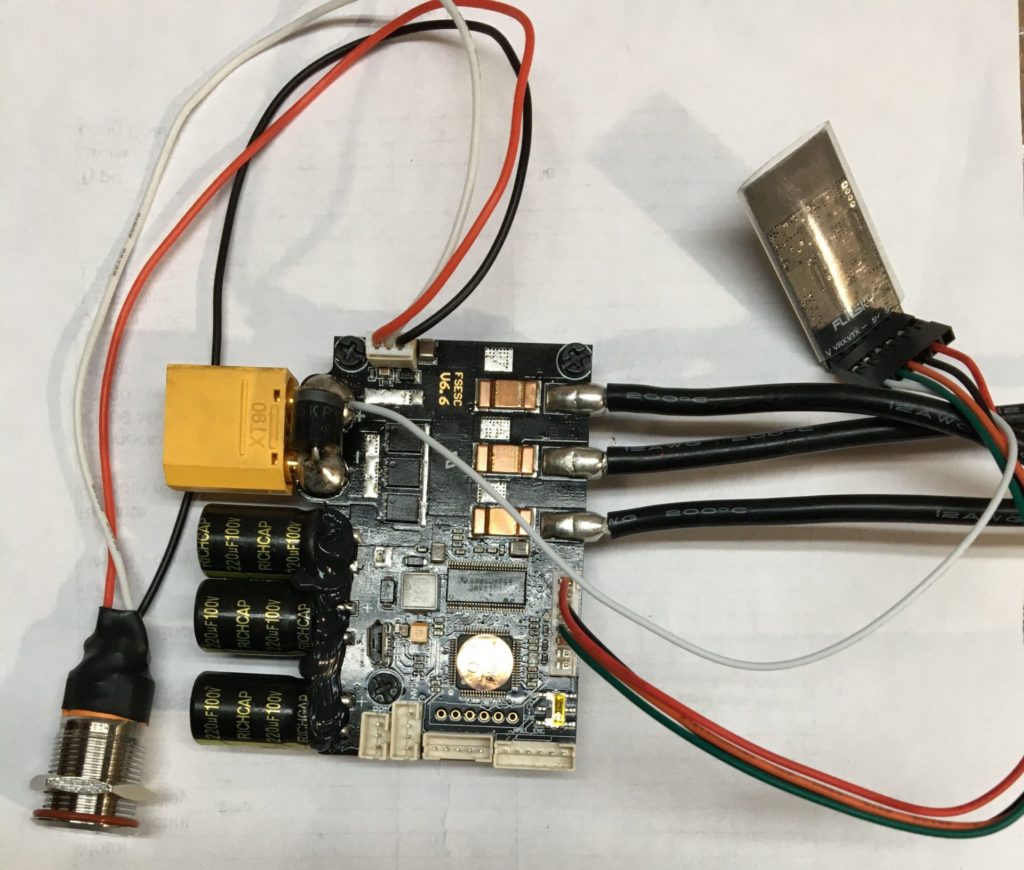
An easy to use long board
TheWasp is a very nice longboard. With a gravity center lowered, it is very easy to jump on it and push, foot break is also easier due to the lower section of the deck. We decided to implement the motor in front of the rear truck to help going down from the sidewalk: you will not be able to unload weight on the front of this board to make a little jump, it will need to fall. The length of the board (40”) makes it easy, has sufficient angle to not let the motor rip too much on the sidewalk edge (it will do sometimes however and this is something we will have to fix).
You can have a look at the comparisons with other boards in our lab. If we have a look at the performance grid, we can see that this is a board that is not the best climber (due to the unique wheel with propulsion), but have a fair amount of torque, maximum speed, and autonomy.
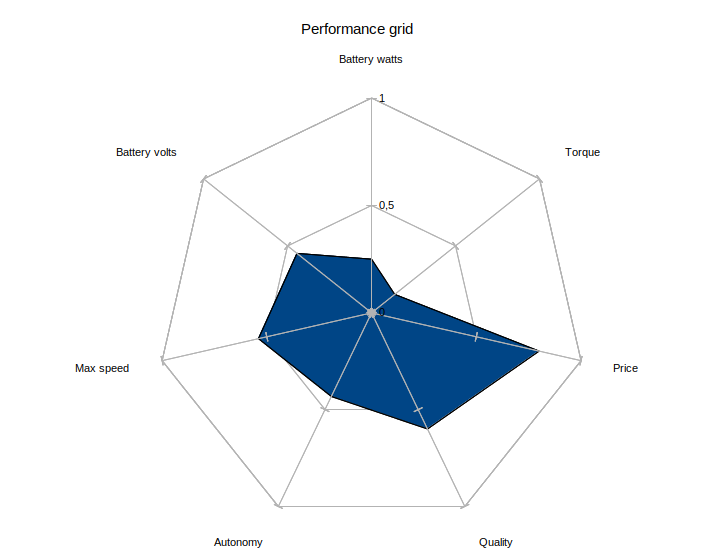
Wheels and up-hills
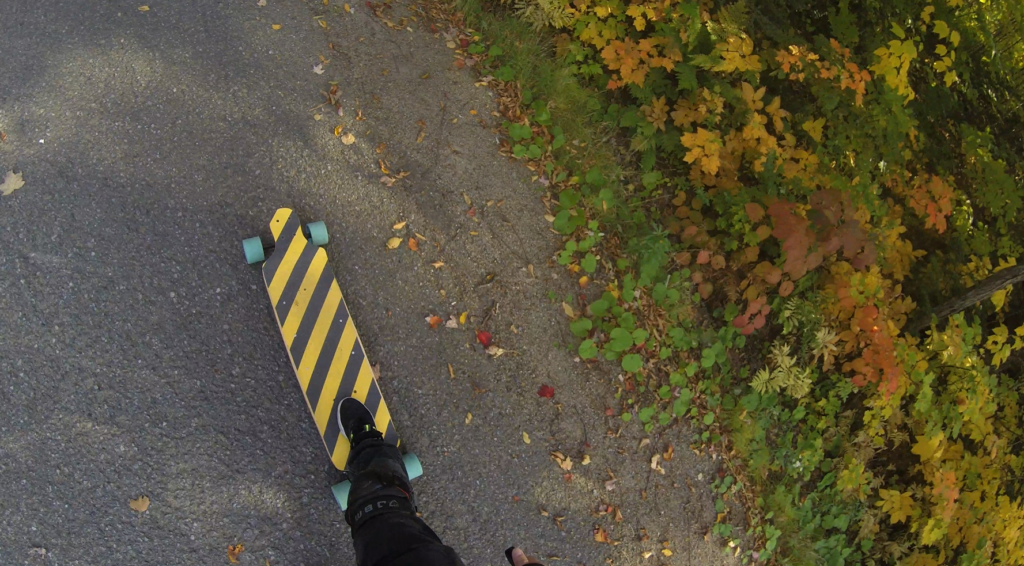
In term of performances, the Caguma wheels are expected to deliver : the 85 mm of diameter gives a lot of comfort and safety to absorb bumps of the road,
On our test at Entrelacs, we rode on a little 5 km long road, with very few traffic, nice neighborhood, and a succession of up and downhills, from 5 to 30 percent. We did not expect TheWasp to ride 30% up hills, but not what happened to us: the first day we rode easily on 10 to 15%, with difficulty on 15 to 20%, and staled over 25%. Acceptable. But two days later, it was difficult to climb over 10%. At first, we thought a difference in temperature was the root cause of this motorized wheel behavior (24c the first day and 16c the second). The reason for this is the belts that turn on themselves because the tension was too loose and they were worn out prematurely. The board was only used on flat asphalt terrain, in Montreal, for less than 30 km and we did not expect that phenomenon. A simple replacement of the belt fixed the issue and allowed us to climb back again.
We could consider that 58.5 mm wide Caguma wheels might not be enough for our extreme down and up hills rides. Our choice to use only a high power motor in our setup have also consequences on the grip. Basic law of physics: 2×2000 w motors using two wheels would provide much more surface to grip that one big 3200 watts motor pushing on only one wheel. As a matter of fact, do not expect TheWasp to climb easily more than 10 to 20% in this current configuration. Under that, and going downhill on asphalt roads, you can push hard (on the remote) because the Caguma wheels are simply the bests. If you have a look at our Youtube Video, you will see how this board is smooth, safe, and easy to ride (for an experimented rider), at speeds over 40 km/h. The wheels will begin to lose their grip and the board will slide very gently only over 42-43 km/h.
We will make some experiments whit other wheels in a later post about this specific aspect and we will try to find the best wheels for that kind of uphill – downhill activities (we would like to test the Boa Wheels). As a matter of fact, in flat road cities with few up-hill, the Caguma wheels are perfects.
When we tested it on the Gilles Villeneuve F1 Circuit, we discovered an out of the box stable board, comfortable to ride with torque, speed, stability, and autonomy that we did not expect. We just believe at this point that the standard bushings of the Flipsky truck can be replaced with profit by better ones we plan to use Venoms) to give a better sensation at high speed. We work on it!
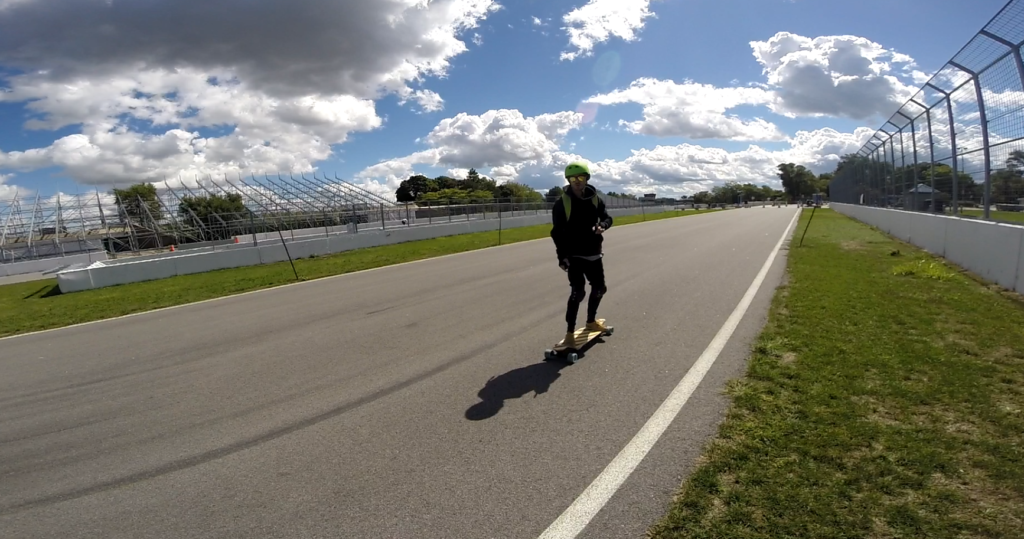
Conclusions
TheWasp is a wonderful board for city riding. With a lot of torque, a high maximum speed, extended range, it is comfortable and feels safe. All the Flipsky, Mboards, and Skateshred components gave us full satisfaction, and after 100 km, appear to be robust. The limitation we found for this board was related to its propensity to worn out belts in climbing context. This is clearly not a board for beginners as it goes fast and can surprise you with its accelerations and speed. Because of the choice to use only one powerful motor, it easy to assemble and maintain. It is also a low-cost board – less than 860 USD, with performances, look and feels, and its finishes comparable to over 1500 USD boards.
Components list : The Wasp FS 0.1
| Component | Characteristics | Cost (USD) | Vendor |
| Trucks | 204MM Electric Skateboard Truck Set (Front and Back) | 59 | Flipsky |
| Risers (2*1/2) | 1/2 Ruber riser | 10 | Skateshred |
| Wheels | Orangatang Caguama 85 mm Blue 77a | 68 | Skateshred |
| Deck | 41″ x 9.5″ DROP DOWN DECKS (#B41) Blue | 50 | Skateshred |
| Bearings | ABEC 7 Bearings | 5,99 | Skateshred |
| GripTape | Jessup Yellow/Black Stripe | 6,4 | Amazon |
| Motor (with 10 mmm shaft) | BLDC Motor Hardened 190 KV 3500W | 97 | Flipsky |
| VESC | FSESC 6.6 based upon VESC® 6 with Heat Sink | 130 | Flipsky |
| Enclosures Battery | Mboards Enclosure – Normal | 24,99 | Mboards |
| Enclosure Vesc | ESC Enclosure | 39,99 | Mboards |
| Motor Mount & polley | Belt Motor Mount Set 10mmm Motor Shaft | 39 | Flipsky |
| Kegel Wheel Polley | 36T Kegel Wheel Pulley | 24,99 | Mboards |
| Battery | 12 SP 2 – 6 Ah – 44.4V | 234,99 | Mboards |
| Remote | 2.4Ghz Remote VX1 | 49 | Flipsky |
| Nuts and bolts | Varia | 10 | Amazon |
| Total | 849,35 |


